Dalmatian Dogs History, Origin And Features Of The Breed
Lucas TorresThe Dalmatian is a magnificent dog. Vitality, activity, exotic beauty, outstanding intelligence, and loyalty – all this has made the breed so popular that for more than 50 years it has not given up its positions, occupying the first places in the world ratings of the most popular dog breeds. The Dalmatian has many qualities that most people can’t help but like, so this will continue to be the case. The demand for adorable spotted puppies never drops, and the number of fans of this wonderful dog is increasing – both in our country and abroad.
Why is a Dalmatian?
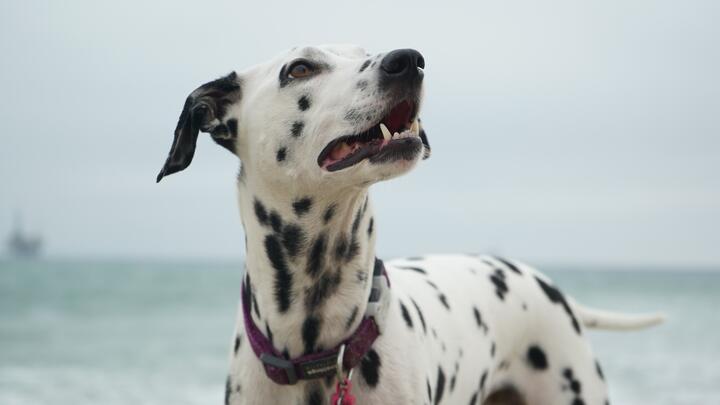 Photo by Catherine Heath on Unsplash
Photo by Catherine Heath on UnsplashThe name “Dalmatian” takes its roots from Dalmatia: this land is considered the birthplace of the breed, and this is stated in its standard: “Origin: Dalmatia, Republic of Croatia. Dalmatia is one of the oldest regional and geographical formations in Europe. It is an elongated coastal belt of about 400 km long, stretching from Novigrad and Paklenica to Cape Oštro on Prevlaka.
The Adriatic Sea, the most beautiful bay of the Mediterranean, washes the shores of Dalmatia and its thousand islands. In ancient times, Dalmatia was inhabited by Illyrian tribes – the Dalmatians, Liburnians, and others, as well as Thracians, Celts, and Slavs. As is often the case, the frontier country, situated on the gentle seashore, gave no rest to the conquerors and at all times changed hands, suffering under the oppression of the invaders.
At first, it was part of the Roman Empire, then from the 6th century it was under Byzantine rule, and three centuries later it was inhabited by the peoples who occupied it by right: Croats and Serbs. From 1420 to 1797, Dalmatia (except Dubrovnik) was under the rule of Venice, which saw the Dalmatian merchants as a dangerous competitor and tried to limit or eliminate the foreign trade of the Dalmatian cities, placing Dalmatia incomplete economic dependence.
Venice not only interfered in the political life of the Pomeranian towns and appointed governors of the urban communities but also introduced all sorts of restrictions on the navigation and trade of the Slavs, seeking to establish its trade monopoly on the Adriatic. The Venetian government itself set trade duties on goods imported and exported from Dalmatia, and tried to regulate prices in its own interest. There were strict regulations on the export and import of goods. Also, the Pomeranian towns were obliged to cease trade with those countries that were at enmity with Venice.
Then Dalmatia fell into the hands of the Ottoman Empire, and would be recaptured only in 1797, became the property of Austria, and in the early 20th century it became part of the Kingdom of Serbs, Croats, and Slovenes (since 1929 – Yugoslavia).
In 1945 Dalmatia was divided between Croatia and Montenegro. On the territory of Dalmatia, there are many seaside resorts, developed tourism and there are many historical and cultural sites, national parks, and reserves that make this paradise place even more attractive. For example, the famous saint Saint Isaac of Dalmatia lived and was buried in Dalmatia in the III century. The UNESCO-protected sites in Dalmatia are Diocletian’s Palace in Split, Dubrovnik City, St. Jacob’s Cathedral in Sibenik, and the Historic Centre of Trogir.
As for the origin of the Dalmatian and its name, there are two versions. The first, classic version says that the breed is so-called because it was born on these lands. The second version is much more romantic: since the Middle Ages, the Catholic clergymen wear clothes woven from the soft white wool of sheep grazing in the Dalmatian mountains and decorated with ermine fur.
The garment is called a dalmatic, an outer robe, the liturgical vestment of the Catholic clergy. Variations of this vestment vary depending on the feast days of the service, so some dalmatics are embroidered with gold and precious stones and represent a true work of art. Perhaps the sparkling whiteness and noble proportions of the Dalmatian led to such a lofty comparison and gave rise to the breed’s name.
History of the Dalmatian Breed
 Photo by Tim Zänkert on Unsplash
Photo by Tim Zänkert on UnsplashThe latest version of the breed standard approved by the FCI in 1999 describes the intended use of the Dalmatian as “A companion dog, family dog, easy to train for a variety of services. Let us now look at what the Dalmatian really is. There are many pictures of dogs that look like Dalmatians, from frescos of ancient civilizations to Renaissance painters. The first official written mention of the breed dates back to 1771.
The famous French naturalist Count de Buffon (1767-1828), author of his Natural History, first published an image and description of the Dalmatian called the “Bengal Bracco”. The author claimed that this dog was well known in Italy and France as early as the 17th century and was considered a local breed, a common hound, which was successfully hunted hare and fowl.
In the eighteenth century, another name for the Dalmatian was spread – the carriage dog. The Dalmatian’s main occupation was to escort horse-drawn carriages 300 years ago. Their love of horses, their strength, hardiness, and ability to run long distances made these dogs irreplaceable companions for travelers. As a rule, the dogs ran under the carriage, close to the horse’s hooves. They not only helped to pass the time on long journeys but also fearlessly guarded the carriage and property in the absence of the owner.
Since then, Dalmatians have changed many “professions”. They were hunted as beast dogs, kept as carriage dogs, indispensable for travel, guarding, and escorting mail. To lovers of elegant dogs, they served not only for protection but also to draw attention to their person. The clever animals were invariably successful in performances by strolling actors and circus performers. In short, it was a universal breed, which, in addition to charming appearance, and undoubted intelligence.
The first Dalmatian Club was founded in 1890 in England, which is rightly considered the second home of the breed, and the first standard was developed. It subsequently became the basis for standards adopted by other countries. The first international standard was developed by the Federation Cynologique Internationale (FCI) in Monaco in 1926. Coming to America, the Dalmatian soon got a new “profession” and a name – Fire-Dog. When fire brigades set off on an alarm to the scene of an accident in a horse-drawn carriage, Dalmatians would run ahead, clearing the street for passage.
In a burning house, the dogs were trained to stay one floor below the working firefighters so as not to be a nuisance. During World War II, the American Dalmatian Club, founded in 1905, participated in the Dogs for Defense Project. Along with representatives of other breeds, Dalmatians successfully carried out guard duty, guarded military, and civilian facilities, and served as patrol dogs. The Dalmatian fire brigade in Boston was trained to deliver reports and supplies for the Red Cross, guard the property, look for the wounded, especially those who remained under the rubble.
The vitality of Dalmatians makes them a people pleaser. In the circus world, Dalmatians have proven to be smart, balanced pupils, and they work well with horses. During performances, Dalmatians usually play the role of clowns, and all spectators are enthralled. Athletic and well-proportioned by nature, Dalmatians in the circus spin drums, climb high ladders and walk on trapezes. The year 1956 was a milestone in the history of the breed. Millions of readers were captivated by the antics of the puppies described in Dodie Smith’s book One Hundred and One Dalmatians.
The Dalmatians became even more famous and loved around the world in 1961 after the release of Walt Disney’s cartoon version. Another round of popularity was added by another, this time a feature film version of “101 Dalmatians” and then the sequel, “102 Dalmatians”. The live dog actors in the movie turned out even better and funnier than the cartoon ones; stores were flooded with “Dalmatian” toys, clothes, bags, and umbrellas with images of Disney dogs; even wallpaper and furniture “a la Dalmatian” appeared.
Unfortunately, this rise in popularity is not good for the breed. Consumers often misidentify the cartoon dogs as real-life, so much so that on impulse they buy a puppy and then, a few days later, they return it to the breeder, surprised to find that the real-life Dalmatian can’t make coffee and would gladly chew on a table leg and leave puddles and crumbs everywhere. The Dalmatian is still a multipurpose dog: a brave guard and a great hunter, a circus performer and a charming “model” of TV commercials and fashion magazines, successfully filmed in movies. And most importantly – he is a cheerful and loyal companion, a tireless companion, and a reliable friend.
Peculiarities of the Dalmatian breed
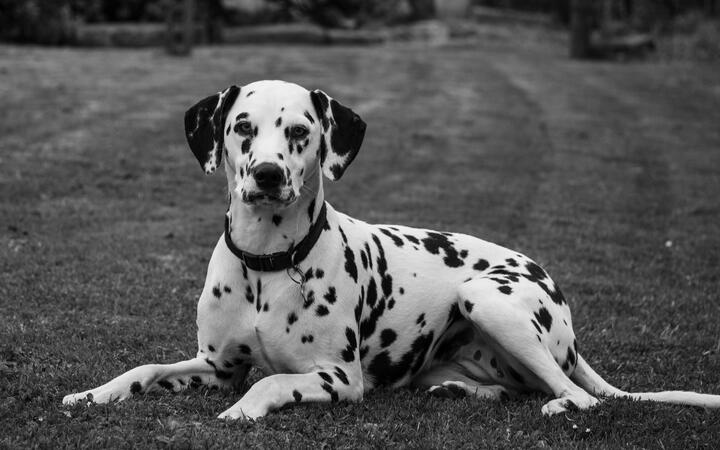 Photo by Loan on Unsplash
Photo by Loan on UnsplashThe Dalmatian is a short-haired dog, whose main advantage and beauty is its luxurious snow-white coat with bright spots. Dalmatian puppies are born completely white and their coat begins to show their spots only in a few weeks.
Sometimes puppies are born with so-called congenital spots – 1-2 spots on the body are visible from birth and the rest appear later. Let’s tell a few interesting facts about the exterior of the Dalmatian. Eyes of this dog shall have the edging, i.e. be edged with black color; gaps in the edging shall not exceed 0.5 cm, and ideally, they shall not be at all. Thus the look of a Dalmatian is very touching and his eyes look especially expressive as if the eyes of a fashionable lady who can’t leave home without makeup were lined with makeup.
The congenital spot (of course, if there is one – such cases are rare, but occur) near the eye is called a “monocle”. Spots on the muzzle can also be fused, forming “glasses” around the eyes, but, this is not a marriage. A Dalmatian’s ears should be dark, with lots of spots, but coal-black ears of solid color are also a deviation from the standard, no matter how spectacular they look and no matter how brightly contrasted with the perfect white of the whole body. “Good” ears in a Dalmatian are considered ears with large, large spots of dark color.
To conclude the story about the Dalmatian’s coloring, let us say that ideally the spots on a white background should be bright, well-defined, and be at a distance from each other. If we are talking about the advantages: what is more important, Dalmatian’s color or exterior and general impression of the dog’s proportions and movements, the second is a priority. The exterior is more important! An experienced expert will give a title to a better-built dog, not to a dog with perfect color. Most of the well-known champions have excellent exterior and beautiful colors, although some of their parents or distant ancestors can be with a lot of fused spots. The Dalmatian’s tail should be as straight as possible – a tail that is too high or twisted into a playful “bagel” is not a sign of a dog’s joy and friendliness, but a real breeding fault. When choosing a puppy, consider these and other parameters stated in the standard of the breed, as they are unlikely to change as the dog grows: the tail may not straighten, the ears – to lighten, etc.
Grooming a Dalmatian’s coat is minimal, and trips to the groomer are virtually unnecessary. You will have to take your pet to a dog beauty salon just to prepare for a show or for other hygienic procedures, such as ear cleaning, hair removal during shedding with special shampoos and hair dryers (if the owner wishes), nail trimming (if you did not learn to do it yourself) and so on.
If you regularly brush, mop, and remove dead bits of hair, you will never have a Dalmatian molting spree. The Dalmatian is a strong, healthy, hardy, long-living dog. From a veterinary point of view, it is one of the most prosperous and unpretentious breeds. However, it is worth paying attention to a hereditary defect suffered by Dalmatians, such as deafness. Puppies deaf in one or both ears should be excluded from breeding. Usually, they are culled and, fortunately, appear very rarely.
The Dalmatian is one of those dogs that grows and develops quickly, but it is impossible to say “what will grow out of this puppy”. Will his bite be correct after the milk teeth are replaced by permanent ones, how many spots the dog will have, and whether they will be located symmetrically and well, will his movements be correct (and a Dalmatian shouldn’t slouch, limp, or waddle like a rabbit or move in a footstep while bringing his front and back legs forward), will his tail be “correct”? After all, a promising expensive puppy may become an unremarkable dog with several tiny, but annoying flaws, and from the ugly duckling on the contrary – the super-duper champion.
There can only be one guarantee: the breeder you trust. A respectable breeder or kennel owner is not afraid to invite you home and introduce not only the future puppy but also his mother, to show her pedigree and many other documents at your request – for example, vet certificates on the absence of dysplasia joints, deafness, hereditary eye disease, certificate of vaccination, etc. Also, it is easier to conclude by seeing the whole litter: are all the puppies equally good, developed, friendly, well-fed, beautiful, etc. There is an opinion that it is best to choose a country kennel, where the dogs from an early age frolic outside: they are more intelligent, better developed, and grow better.
It is noteworthy that when participating in shows and breeding work, one of the main factors to which the judge or a club representative will pay attention, first of all, is the Dalmatian’s character. Character is the visiting card of the breed, the most distinctive feature making a Dalmatian a Dalmatian, but not something else. Aggressive and cowardly individuals are strictly excluded from breeding and are not allowed to participate in exhibitions! The Dalmatian must be active, curious, and friendly, and no one else. The nice thing about the Dalmatian is that it is a family dog.
It does not “single out” its owner from the rest of the household, and is willing to shower its love and affection on all family members, from an elderly grandfather to a one-year-old child. Training, training, and interaction with a Dalmatian promise to be a fascinating adventure and a true fairy tale with a happy ending: this dog loves to learn and learn something new every day. Walks, games, learning commands, trips to the country, travel, hiking-all this fills the life of the dog and its owners with special meaning, because everything is fun for the Dalmatian, everything is new and everything is fun and exciting. Communicating with a Dalmatian is the main reason for saying “yes” to this wonderful breed and never regret your choice!
Interesting is also the fact that Dalmatians have very rich and expressive facial expressions; they are considered one of the most “smiling” dogs. It is believed that females are more gentle and obedient than males. However, one must take into account the individual character of each dog individually, and most importantly, its genes and the conditions in which your puppy lived before he came to your home, and how he will live with you already. Any baby – puppy, kitten, or human baby – is a real hurricane.
And a Dalmatian is a Hurricane squared and cube! His curiosity, playfulness, and sociability are sometimes “off the charts” and even tiresome, but it’s so cute and touching… But you can’t let him chew on your slippers and furniture or indulge in pranks or outright “roughhousing”, because you risk raising a dog who won’t control you. Such a puppy should be educated from the very first days of his arrival in your family, but not by shouting, rudeness, or severe punishment. The Dalmatian needs somewhere to “blow off steam” so he can eat, sleep, and obey commands and prohibitions, so the best place to keep him is on the property, where he can run and frolic for hours on end.
If you live in the city, be prepared for long walks and activities like running, cycling, playing with Frisbees, throwing sticks and balls, etc. Lonely, phlegmatic, or elderly people as well as those who do not have much free time to exercise with the dog should better avoid getting a Dalmatian and opt for a calmer breed. In short, the Dalmatian can be described in one phrase: you do not get bored with it! But do you want to “get bored”? And maybe this energizer, this perpetual engine, this smiling clot of irrepressible energy and joy will turn your life upside down, paint it in bright colors, fill it.
The Dalmatian’s History and Origin
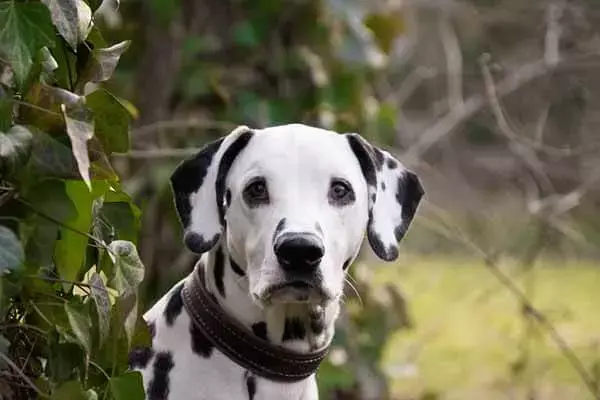
The Dalmatian’s history and origin are complex. Many theories exist, but it has never been proven. Some experts believe that this breed originated in the eastern Mediterranean and was later spread to India and Europe by the gypsies. In fact, the breed’s name, “dalmation,” suggests that it originated in Dalmatia, the historic region of Croatia on the eastern Adriatic Sea. Regardless of the exact origin of the Dalmatian, it has always been known as the most elegant and regal dog in the world.
While the breed’s history is unclear, many believe that it came from Romany nomads. Today, the Dalmatian is widely recognized as a dog that is both graceful and docile. However, it is unclear where the Dalmatians actually originated. The Dalmatian’s modern origins have been debated for centuries, and no one knows who actually originated the dog. In fact, many breeders believe that it is a mix of a Dalmatian and a Siberian Husky.
The Dalmatian breed is believed to have originated in the early 1600s, in the Diocese of Dakovo in eastern Croatia. Bewick described the Dalmatian as a medium-sized, white dog with black spots. By the seventeenth century, the breed had already become popular in England and was used as a shepherd, war dog, and even a circus animal. It was not until the nineteenth century that the Dalmatians gained prominence as a breed, as they were well-known as good coach dogs that cleared the way for horse carriages.
The Dalmatian’s origins are unclear, but tracing their DNA and genes has allowed scientists to identify the genetic make-up of this breed. It is believed that the breed originally came from the Mediterranean, but this does not mean that the Dalmatian has come from there. The dog’s ancestry was not limited to a specific area. The earliest known history of the Dalmatian dates back to 3700 BC when Egyptian King Cheops was said to have owned one. Greek frescos also depict a black-spotted dog chasing a boar.
The Dalmatian is an ancient breed with a long and proud history. Its origin is unknown, but it is believed that the breed was brought to Dalmatia by the Romany nomads. It is now recognized as one of the most beautiful dog breeds in the world, and its history has been shaped by the locals. In addition to their love for humans, they are also very loyal. They are known for their loving and devoted nature.
The Dalmatian’s ancestors are complex. The majority of Dalmatians have normal hearing. Less than 8% are born deaf. Deafness is caused by the decay of organs in the ear. Although it is a common characteristic, many dogs are able to adapt to this condition and live a long and healthy life. If you have a dog with the characteristics of a Dalmatian, be sure to find out the truth about its origins.
The Dalmatian’s name and origin are mysterious. The breed’s name comes from Dalmatia, an area in Austria. In addition to this, it was also known as the “Firehouse Dog” and “English Coach Dog.” Those are all names that are used today for the Dalmatians, but it was not until the late 1800s that this dog was given a specific place in history. The dog’s ancestry is not certain, but the earliest known record of its origin dates from 1360 A.D.
The name Dalmatian has mysterious origins. The name is a portmanteau of the words “dama” and “dog.” A spotted Dalmatian was first spotted in a painting by Andrea Bonaiuto in the 14th century. Despite the mysterious history of the breed, it has a long and honorable history. But what was its purpose? And where are its descendants today?
While Dalmatians were first bred in Croatia, they eventually reached Europe. In the 1800s, Dalmatians became famous as carriage dogs, as well as being used in military work and hunting. In the United States, Dalmatians have become widely known as a popular breed for carriages. But they are not only associated with this type of dog’s history. Their names are a product of their history, so it is vital to know what is behind the spotted appearance.
- WildlifeWhat Is The Lifespan Of Hippo?

- RodentsHow Do Hedgehogs Sleep?By Camilo Walker
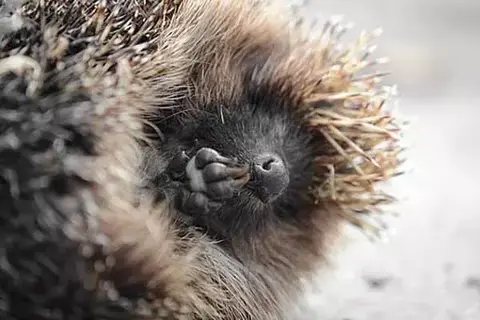
- Wildlife12 Interesting Facts About FoxesBy Murphy Scott

- Birds12 Interesting Facts About DovesBy Amelia B
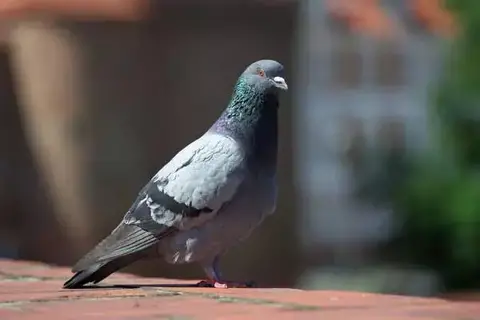
- Wildlife7 Interesting Facts About LlamasBy Amelia B
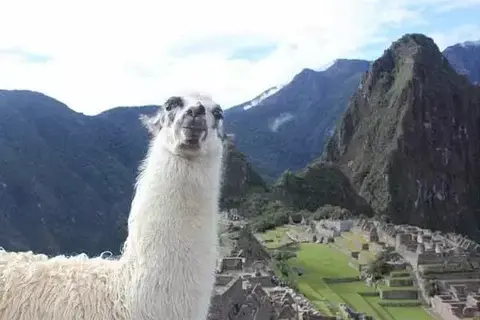
- WildlifeInteresting Facts About Hermit CrabsBy Evelyn Star

- CatsHow Much Cat Litter Should I Use?By Nolan Foster

- DogsWhat Is Chinchilla Life Expectancy?By Khai Dove

- BirdsWhat Does A Peacock Eat?By Nolan Foster
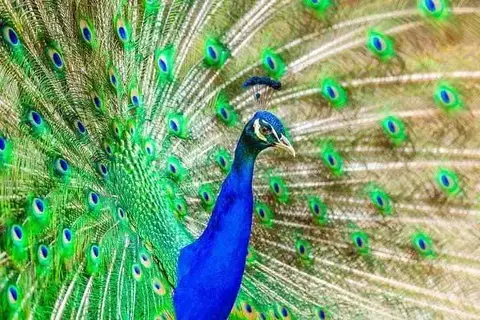
- RodentsWhat Do Hedgehogs Like To Eat?By Noah Young
